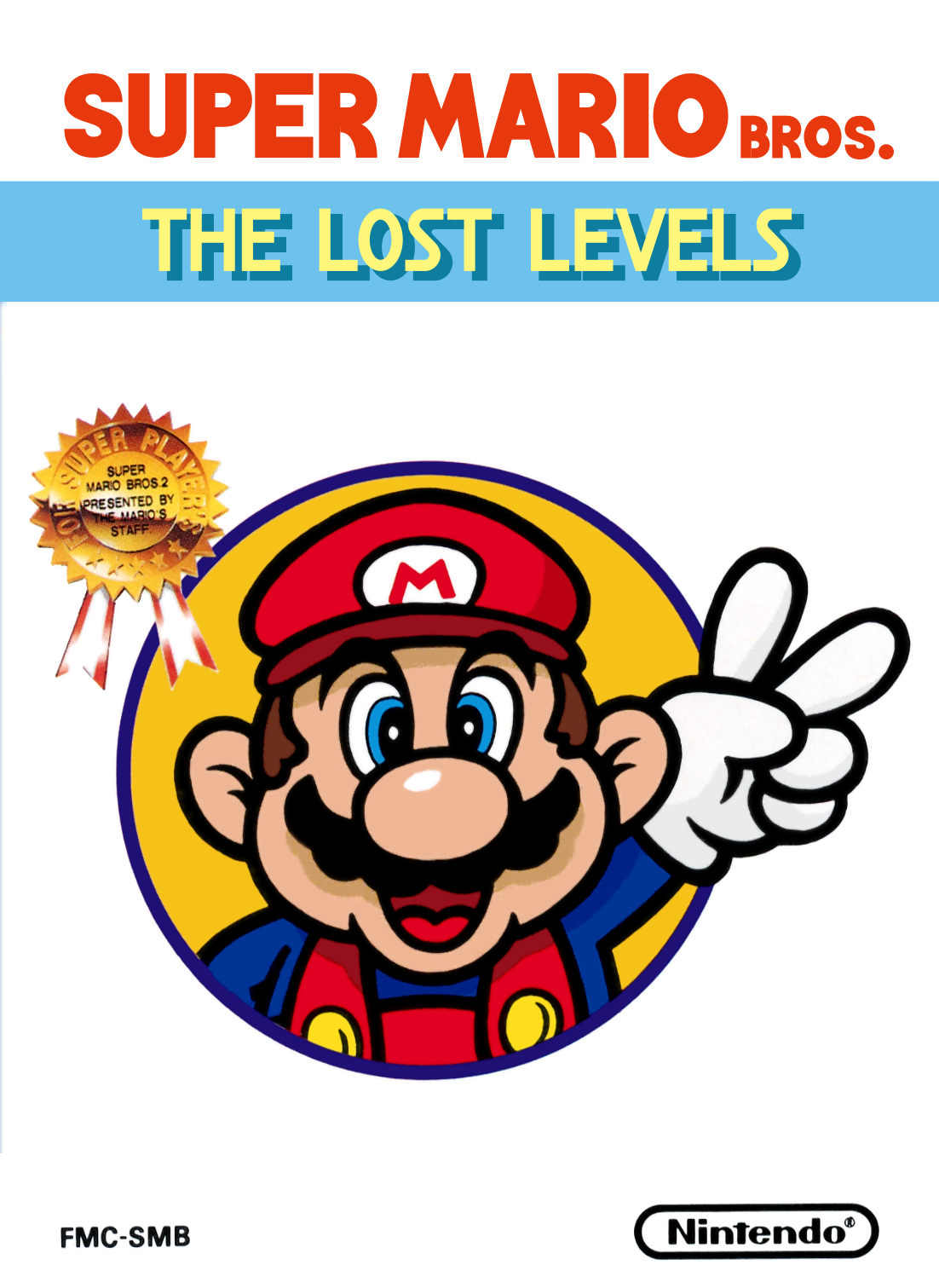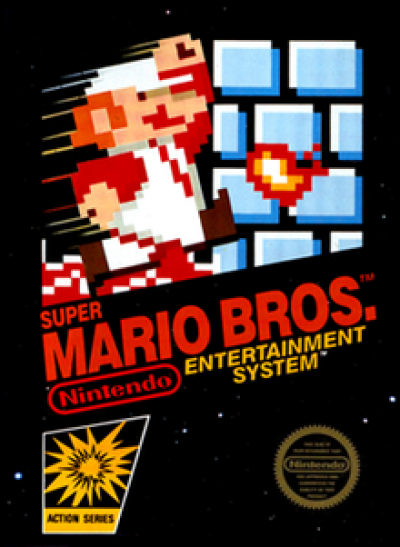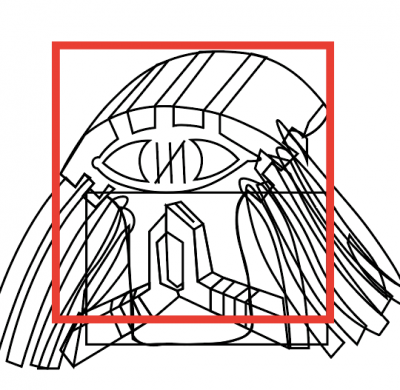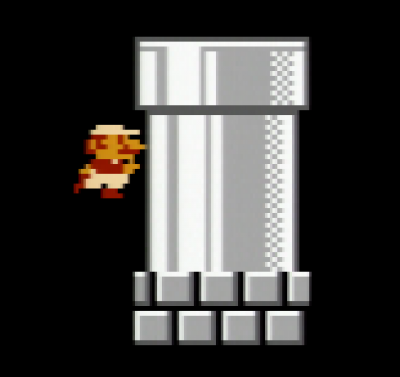I find it strange that the rules:
-
Start timing at "start" press.
-
have a time adjustment rule to U.S. version
-
I just find it weird that we have a different standard between the timing scheme of SNES SMB1 and SNES Lost Levels. I don't really understand why this is the case.
-
I'm not so much against this, but is a little atypical. If a small difference between the versions is found later on, it could potentially be a bad thing. For example, with Super Mario World, the J version had a harder orb method that could save time over U.S. The only time difference between the versions was a single text display was only 31 frames. The standard with speedruns these days has just been to use the fastest version to avoid these kind of situations.
Just thought I'd mention it. I personally prefer starting from character control, but I guess it doesn't matter.
Yeah why does the timing start when you press start but in SMB1 is starts when the game starts?
For the second point, I've never considered it to make sense.
There is precedent from the speedrunning community at large to use the fastest version. There is also precedent just in the lens of Mario speedrunning with SMW and SMB3.
In SMW, running 96 on a US cart is sacrificing 18 seconds of free timesave with no adjustments made. In SMB3 they are all on the same board, even including the SNES versions in the same leaderboard (this doesn't work for Lost Levels, it just shows that there shouldn't be adjustments based on version).
On the SNES, I thought timing starts when you push start because you can mash through the world 1-1 screen instead of waiting on the frame rule on NES/FDS.
-
This is just a question of SDA vs RTA. As long as the whole board conforms to one, I don't see what the issue is. (Personally, I prefer RTA since mashing through the opening of a game prior to character control should be considered part of the run.) There is probably a historical reason RTA was chosen for this game which possibly an older mod can comment on.
-
If we're going to point at precedents then we can also look at any% and warpless of this game (non-SNES). We already remove loads (https://www.speedrun.com/smbtll/guide/jj2r0) for those runs based on hardware condition so if the precedent says "Just play on the fastest version!" then everyone should get a Powerpak or accept a 6+ second time loss. This rule was most likely implemented to retain fairness and competitive integrity which isn't a bad thing.
My 2¢ anyway
I just realized my point for 2) might not have been clear.
If a community can define the differences between versions to something that doesn't affect gameplay (for example, lower framerate makes the gameplay easier & slower) and then use that definition to compare runs of the same game played on different hardware (region or condition), then it promotes interest in the run. Anybody with this game from their childhood can pick it up and know they aren't at a disadvantage just because they don't have a certain version.
I'm not too familiar with SMW but for SMB3 the differences (https://www.speedrun.com/smb3/thread/7pslq) extend to the actual gameplay and isn't just removing time for load(s), meaning the game could be easier or harder depending on the platform & strats.
Again going back to the precedence example, in a very similarly timed game SMB1, there is precedence to use the fastest official version of the game. VC rereleases and emulators are allowed, however in the case of a lower framerate/disadvantage from using these platforms, these differences are just chalked up to be a disadvantage of not using the fastest version of the game. This is true for the all-stars version of the game as well, as the Japanese version of the game is faster due to faster flagpoles, in which despite a measurable discrepancy we do not retime for those who use the US Cart.
In the case of emulators however, unofficial emulators (i.e. non-VC) generally are banned in the Mario community and speedrunning communities at large when they become faster than the official version of the game. That might be my perception and the reasoning could very well be due to the other inaccuracies on those emulators, but it makes sense to me as the emulators that are allowed coincidentally either are accurate to the original hardware or slightly slower. On the opposite side, other games where the virtual console release or playing it past its initial platform is actually faster (e.g. Paper Mario WiiU VC and Wii for Super Mario Sunshine), we often see runners use said version of the game meaning using the official fastest version of the game even if it isn't the original hardware for competitive advantage isn't even that unheard of, but that is a separate argument.
Going back to SMB2J as precedence, I think that retiming as opposed to just using the fastest version outright makes sense, as an advantage in using unofficial hardware in the form of flashcarts with a ROM isn't in the previously established spirit of allowing said platforms (i.e. for convenience rather than an advantage), and given that games on the FDS are a bit of a special case in speedrunning as a whole, I don't think that using this timing method exclusive with the FDS version and not retiming for the US vs Japanese version is problematic.
To expand on the point I was trying to make with SMW and SMB3, regardless of actual gameplay differences the idea of using the same board is consistent with the idea of not retiming runs done on the US cart. I get that the argument you are tying to make is that the advantages in one platform negate the disadvantages to an extent that this should be viewed as a trade-off in consistency vs time-loss and therefore not be adjusted, but in other 2D Mario runs, there is definitely precedent in straight-up conforming that a version of the game is better but not readjusting the time. In SMW, besides two powerups being present in the US release, neither of which present an advantage in speedrunning (a marginal case can be made for the cape in VD1 being advantageous for low-level runners in certain categories), the J-version is seen as strictly superior (https://smwspeedruns.com/Version_Differences#J_Version_Superiorities). Despite this, versions are not retimed, for what I assume is the ease of playing the Japanese cart on SNES hardware. I've also talked about the example of SMB1 All-Stars US vs J. I probably shouldn't have used SMB3 in my original example, but even then there is a clear advantage for certain platforms using the link you stated, with the version ranking being listed on that document. I highly doubt that a unified leaderboard depresses turnout for the game in spite of this. If anything, it just gears people towards using certain platforms.
If the concern really is putting people at a disadvantage and therefore depressing interest in the run due to having to play on a specific version at the top level, I really think that concern is overblown. The differences between the All-Stars versions amounts to less than two seconds, in a category that has more time-save than that even in the top time of the game. If someone is worried about being able to initially compete due to their version of the game, than that person most likely didn't have the motivation to start running it in the first place. This is coupled with the fact that the Japanese cart for the game is incredibly cheap and the version differences only affect one category. In many games, including Lost Levels, I've seen people originally start on the US cartridge and transition over to the Japanese cart when they wanted to "upgrade" their gameplay in order to become more competitive.
On the other hand, retiming rules I've seen work the opposite way of what you are proposing. Oftentimes, not accepting the time as-is is confusing and having to do so may be a demotivating factor in getting times on the leaderboard. The fact that a beginning runner may not have a propensity to look at the rules in the first place also points to not retiming the inferior versions being pretty fruitless, as given the propensity to use the fastest version of the game across nearly the entire site, the assumption of losing time to regional differences initially may be the assumption from the player.
If the concern is primarily from encouraging consistency across FDS to Lost Levels from a timing perspective, I think this concern is also overblown. At least in my opinion the runs and communities are pretty different, so cross-platform interest is less important than consistency from platform to platform (i.e. SNES to SNES). That's also just my opinion.
It's a constant screen transition without any input besides holding Start. It cannot be compared to the difference in SMB1, where you need to do different strats and the exact time difference would be very hard to determine, and it cannot be compared to VC, where the lower framerate makes the game (in theory) easier.
Effective immediately, any submissions using the SNES9x emulator will not be verified. The SMB2J mod team has concerns about its integrity due to its ability to overclock and remove lag frames, which may not be easily detectable. Additionally, we request that all BizHawk submissions avoid using the














